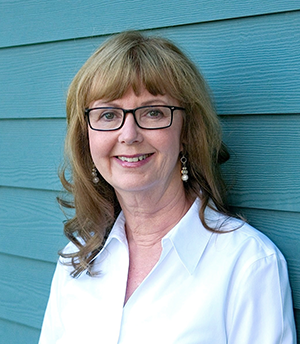I recently received an email from a writer who shared a compelling story of the power of a single reader. This is what she said:
“I’ve done lots of book signings and I often hear from other authors that it “isn’t worth their effort” to do a signing where they only sell a dozen books.
But this week I received the Facebook message below.
It’s an interesting example of how ONE book sold to ONE complete stranger FOUR years ago earned me a superfan!
She has never contacted me before, but I’m so glad she did because of course I responded and we have now arranged that I will visit her book club this coming Tuesday!
I will be nurturing this relationship and so glad she reached out to me!”
 The author is novelist Elinor Florence. The note she had received from the reader said (this is an edited version of the note):
The author is novelist Elinor Florence. The note she had received from the reader said (this is an edited version of the note):
“I am leading a book discussion of your book Wildwood on Tuesday and would like to know more about you. I met you [at a book signing once], and because I really hadn’t heard of you at that time, I only bought Wildwood. [I] am now wanting to read Bird’s Eye View.”
“You are a very compelling writer, and I have now read Wildwood 3 times and recommended it to [a large book festival.] I am one of your biggest fans now, and everyone I told about the book has absolutely loved it!”
I mean, isn’t that what every author dreams of hearing from a reader? That someone didn’t just buy your book, but read it. Didn’t just read it, but told their friends about it. And even more, took the effort to let a large literary festival know about it, to hopefully feature the author. Even the Facebook message is a huge step, because so many writers never hear from their readers. If you want a reason why you may want to consider being active on social media, this is an example. Perhaps if Elinor wasn’t on Facebook, she never would have received this note.
Of course, Elinor makes the point that this entire process took years to unfold.
Every Reader Counts
As Elinor and I emailed this past week, I looked back to see when my first communication with her was. She subscribed to my newsletter on October 5, 2013, more than eight years ago. Since I send a weekly newsletter, that means she has received more than 430 newsletters from me in that time.
It was two years later in 2015 that she attended one of my webinars.
It was more than a year later in 2016 when she sent a lovely note to me where she said:
“Thank you so much for your ongoing Friday posts. I have saved some of your advice that is meaningful to me, and copied it into a document on my desktop, where I read it often.
In spite of living in a tiny village in the Rocky Mountains — with no writing group, no bookstore, and no fellow authors to inspire me — I have done enough marketing that my wartime novel is now considered a Canadian bestseller (as reported this summer by The Globe & Mail, and The Toronto Star — Canada’s two largest newspapers).
I owe some of this success to my small core of online advisors, of which you are definitely one.”
I featured Elinor in my newsletter in 2017, sharing a compelling story of how she found readers for her book.
Then there are emails between us from 2018, 2019, 2020, and this year. The journey between a reader and a book and an author can take time. In emailing about this very post, Elinor mentioned that while she had read my book (Be the Gateway) in 2019, she hadn’t reviewed it online. She did so yesterday, posting a review to Amazon and Goodreads. Every interaction can have unintended — and wonderful! — consequences.
Attention is a Scarce Resource
I was reading author Sarah Hays Coomer’s newsletter this week, and she shared a story of how she is reflecting on the value of where she puts her attention:
“I read a not-very-good book about attention last week. At first it was interesting… but then her attention began to wander and the book never really made a point or illuminated much of anything.
It was disappointing, and I recognized I had just given 6 hours of my attention to something that didn’t merit it. But that revelation, in itself, turned out to be useful. It made me realize my role and responsibility in the choice to start and continue reading.”
Something writers don’t always take into account is that the “transaction” of a book is not just the cover price. It is asking a reader to spend 5-10 hours with it. So many books are purchased, yet unread. Which is why I believe in authors sharing, to help ensure that these books don’t just get sold, but are read, and create word-of-mouth marketing.
As Sarah points out, so much of this is about attention. Which is why I love the story Elinor shared about consistency and connection.
Thanks!
-Dan
